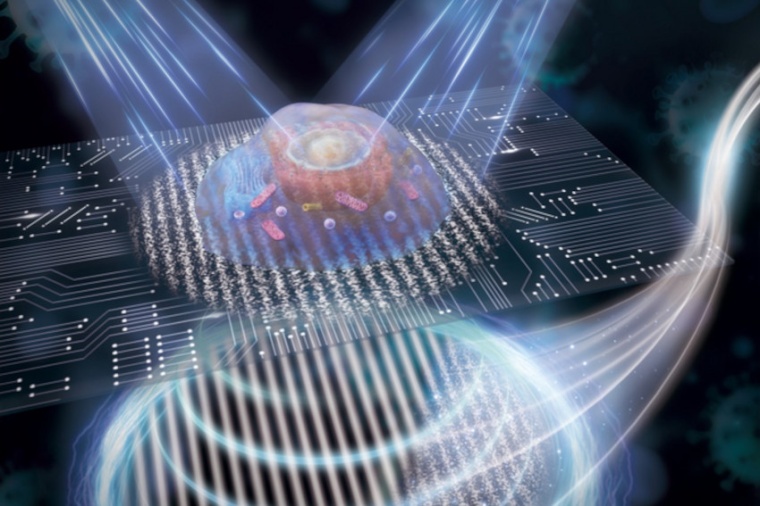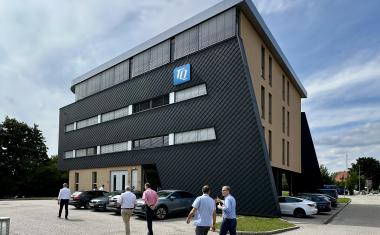Better microscopy for live cell real-time imaging
New approach for solving problems in cell biology, cancer research, developmental biology and neuroscience.
Structured illumination microscopy (SIM), as one of the most promising super-resolution techniques for bioscience, offers unprecedented opportunities for live-cell investigation due to its merits of full-field imaging, fast image acquisition, and high photon efficiency. Despite these advantages, SIM still suffers from several technical challenges since high-quality SIM reconstructions rely heavily on post-processing algorithms, particularly precise knowledge about the illumination parameters, minor errors of which may even have a significant impact on the reconstruction results, resulting in substantial reconstruction artifacts. Moreover, these parameters are sample- and environment-dependent, so they cannot be compensated by one-time calibration, necessitating posterior restoration from the acquired experimental data unless the experimental environment is harshly maintained stable.

Although many algorithms have been proposed to estimate illumination parameter, the conflict between accuracy and speed and the vulnerability to low signal-to-noise ratios (SNRs) hinder the practical application and widespread adoption of SIM in the biomedical community for high-speed, real-time, long-term live-cell imaging, where low photobleaching, phototoxicity, and light dose are a must, with the consequent more severe low SNR. Now, a team of scientists led by Qian Chen and Chao Zuo from Nanjing University of Science and Technology have developed a new SIM algorithm. The efficient and robust algorithm could be a promising method for real-time, long-term, super-resolution imaging of live cells.
The researchers discovered that the ideal phasor matrix of a SIM pattern is of rank one, which means that it should have only one principal component, describing the single best subspace of the data in the least-squares sense. However, under real conditions, experimental imperfections (e.g., noise, optical aberrations, OTF-induced signal attenuation, dysregulated modulation depth) and other disturbances will inevitably produce noisy measurements, resulting in high dimensionality of the pattern phasor matrix. Therefore, eliminating these irrelevant disturbances and finding the first principal component of the high-dimensional pattern phasor matrix is the key to the success of robust parameter estimation for SIM under low SNR conditions.
Principal component analysis (PCA) is a non-iterative dimensionality reduction tool by geometrically projecting data onto lower subspace called principal components, with the goal of finding the best summary of the data using a limited number of principal components, which just coincides with the task of accurately estimating the illumination parameters from the phasor matrix. By introducing PCA, the unwanted noise and other disturbances in the raw pattern phasor matrix are effectively cleaned up after dimensionality reduction to extract the desired, parameter-dominating principal component without reference to prior knowledge, thus precisely and efficiently identifying noninteger pixel wave vectors and pattern phases.
However, PCA itself can be a time-consuming operation for relatively large matrix dimensions. The researchers derived that the inverse Fourier spectrum of an ideal pattern phasor matrix is a down-sampled 2D Dirichlet function with most of its energy concentrated in limited support. Therefore, a frequency domain mask is applied to significantly reduce the amount of data involved in the PCA computation while further rejecting the interference of the noise components, confering PCA-SIM lower computational complexity and better robustness to low SNRs.
Experiments demonstrate that PCA-SIM achieves more accurate parameter estimation and superior noise immunity with more efficient non-iterative efficiency than conventional iterative correlation-based approach. “High accuracy, efficiency and robustness advantages pioneeringly enable flexible, real-time, high-quality SIM super-resolution imaging of live cells with on-the-fly adaptive illumination parameter compensation based on PCA-SIM under complex experimental conditions,” Zuo an colleagues said. “PCA-SIM has the potential to facilitate new biological discoveries and open up new possibilities for solving problems in cell biology, cancer research, developmental biology and neuroscience.” (Source: LPC CAS)











